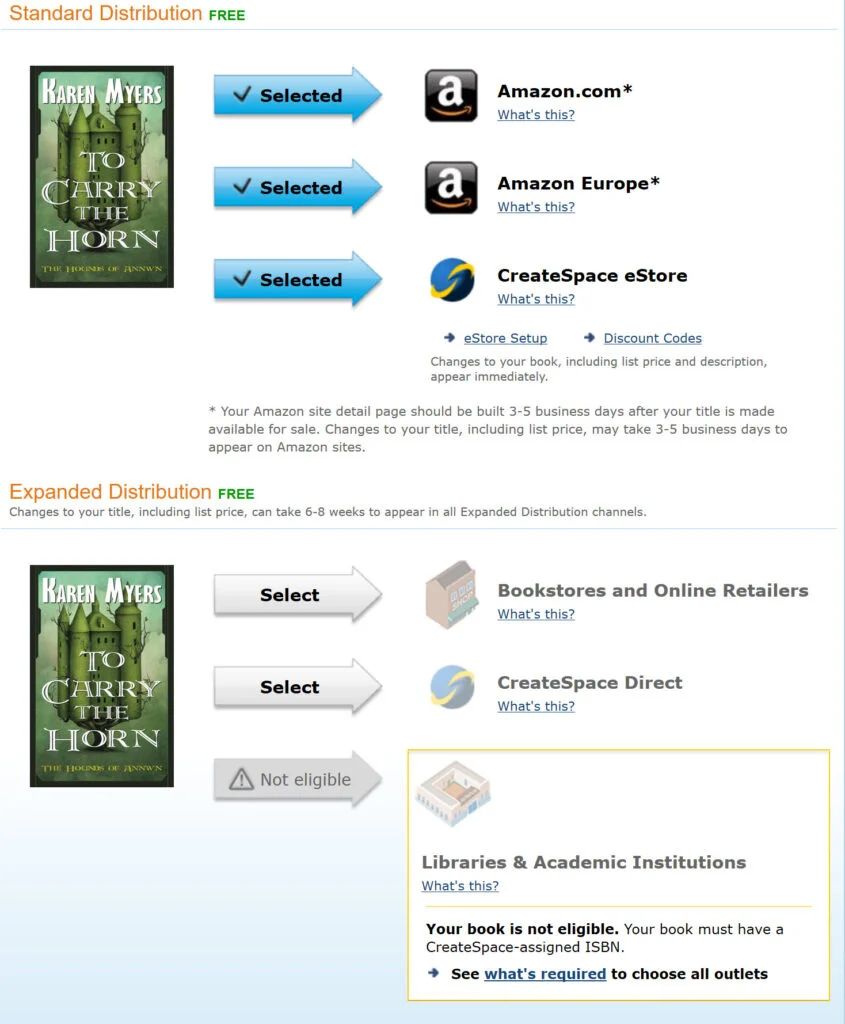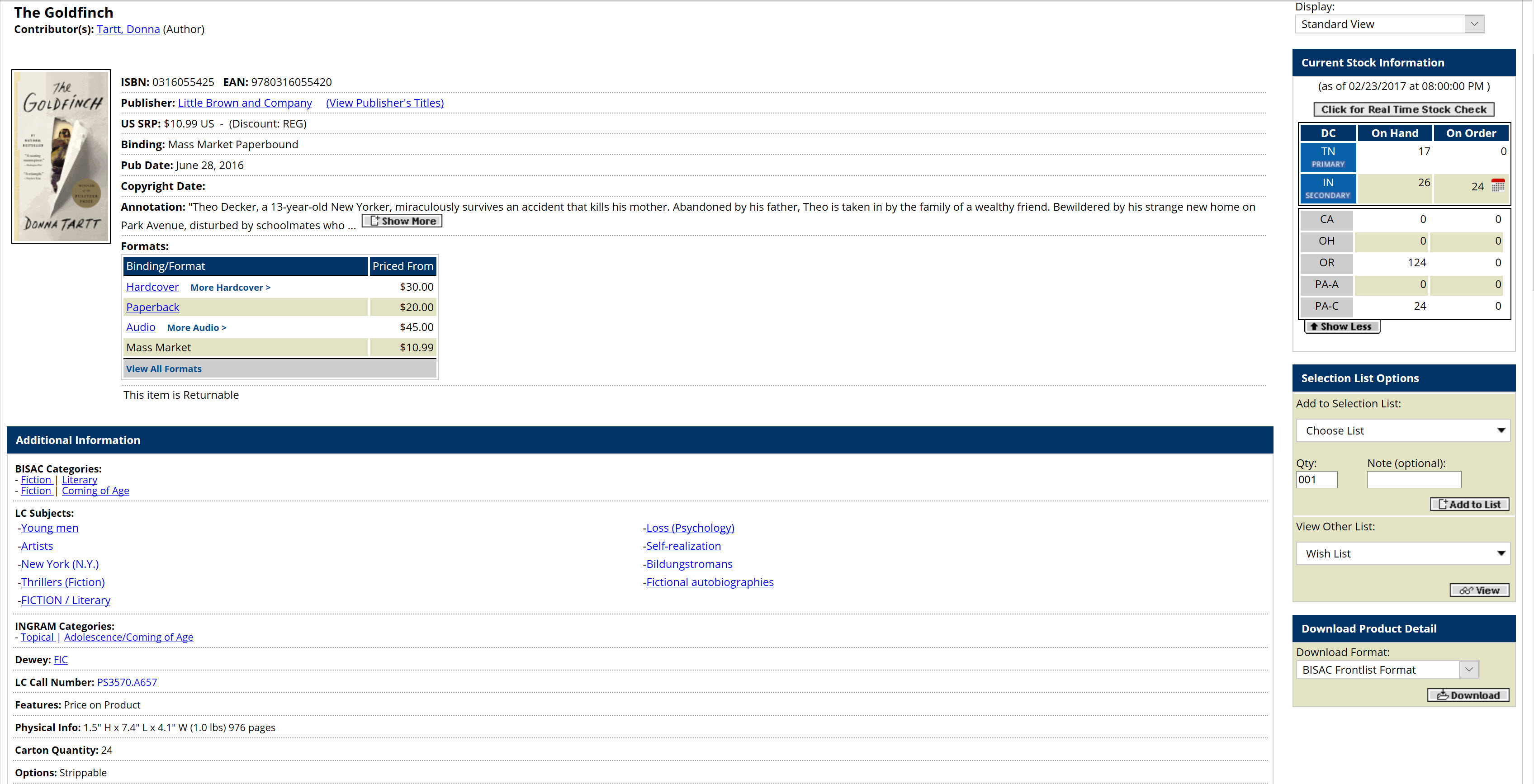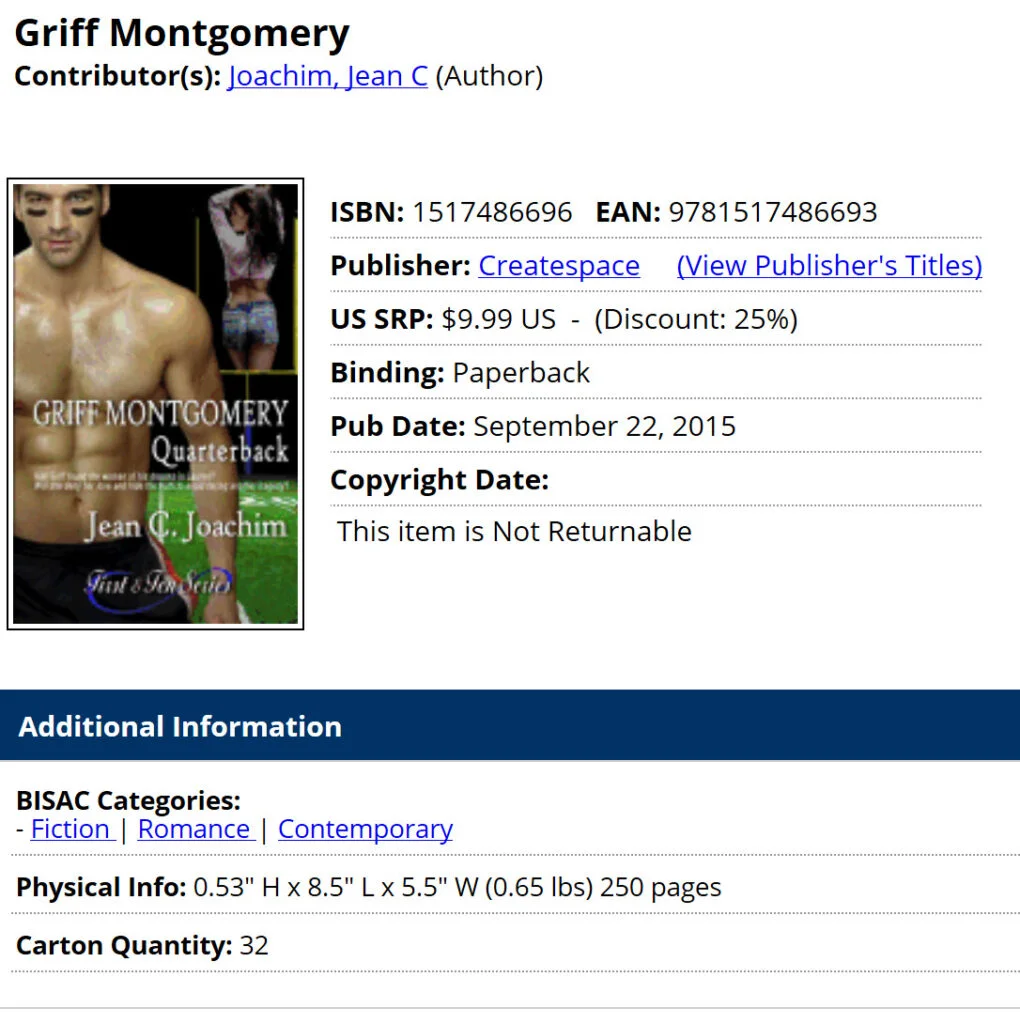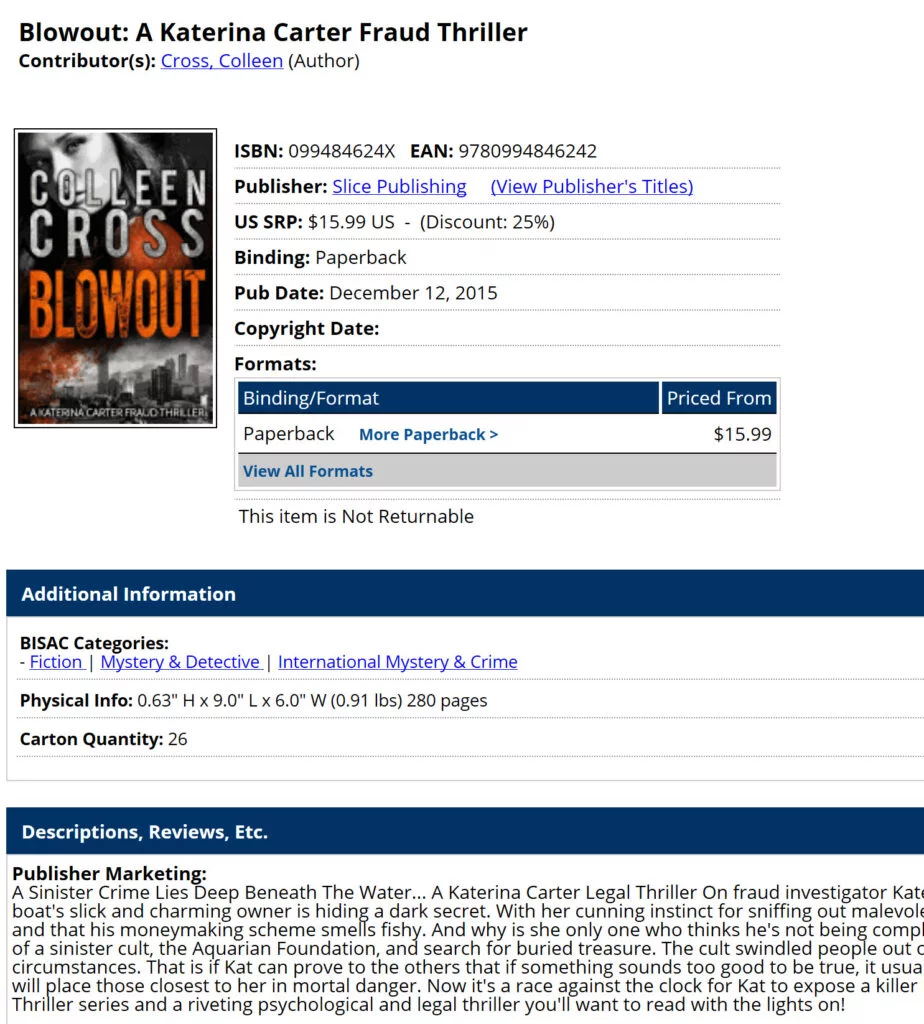In today's Opinion slot, US novelist Karen Myers challenges indie authors to view their books not only from the perspective of readers, but also through the eyes of that all-important mediator, the bookseller.
When we consider whether or not we want to use the Createspace Print on Demand (POD) service as our primary print edition distributor outside of Amazon, or whether we should add Ingram to the mix by listing our book there directly, we often consider the costs and let that drive our decision.
I think we should instead pay more attention to what things look like to booksellers, those stores that order our books. It’s hard to see that information directly, but we have all the clues.
PUBLISHER NAME / ISBN: If we use Createspace’s Expanded Distribution option, the “Booksellers and Online Retailers” part means that Createspace adds our book to their datafeed to Ingram. If we use Createspace’s free ISBN, the official publisher name shows up as “Createspace”; if we use our own ISBN, the publisher name shows up as “OurPressName”.
DISCOUNT: Ingram charges 15% for its services. The standard book trade discount is 55% (before Ingram’s fee), which you can set when you list your books directly on Ingram. Createspace lets you set a maximum of 40%. So, if you list a book at a 55% discount on Ingram, the bookseller and any intermediate distributors split the 40% remaining. Via Createspace, they split 25%.
Take a look at this traditionally published book as it appears on iPage, Ingram’s program for booksellers. Booksellers who are supplied by Ingram can go here to place orders. Even for specialty booksellers who buy from downstream distributors (who take their own cut), their suppliers show them similar information, from Ingram’s data feed.
Lots of interesting info here:
- A) Stock on hand (far right) — can the bookseller get it in a hurry, in several copies?
B) Discount: REG (code for 40%, the “regular” discount available to the bookseller)
C) Publisher name (clickable) – useful for small presses to see what else is available)
D) Author name (clickable) – useful to see what else she wrote
E) Other formats and prices – maybe your customer wants a hardcover
F) Options (bottom) – returnable/not returnable. Strippable means send back the front cover only.
G) Category information – from the MARC record and related information
H) Physical information – from Ingram
You can achieve the same results by listing directly on Ingram, making your books indistinguishable from any traditional publisher. There’s no mention of POD. In fact, there’s even a pseudo-inventory amount on the far right (off picture) so that the bookseller doesn’t have to worry about availability (a non-issue for POD).
But what happens when you list on Ingram via Createspace’s expanded distribution, using their (free) ISBN?
Note the “Discount: 25%” – that’s what’s left for the bookseller, and the “Publisher: Createspace”.
The lack of additional info is caused by the absence of a MARC record (created by libraries or third parties) and has nothing to do with Createspace. The BISAC info does come from Createspace.
What does this say to the bookseller?
- Any bookseller with a bias against supporting their competitor Amazon can easily see that this book is published by an independent author, just as they can tell if the source is Lulu, or various vanity presses.
- You offer booksellers an unattractive discount, even if you set the maximum allowed by Createspace.
- You don't let interested booksellers see what else is offered by your imprint. Your imprint name isn’t visible if you use a Createspace-provided ISBN.
What If You Use Your Own ISBN?
If you use your own ISBN, things are a bit better – at least it’s not obvious that you are an indie. But the discount remains a barrier.
Why Does This Matter?
So, if we don’t expect bookstores to proactively stock us, does any of this matter?
Hard to say. We do know anecdotally that some stores won’t buy books, even to fulfill a customer’s request, if their potential profit is too low. And we do know anecdotally that some stores dislike sending any business Amazon’s way.
My opinion is that I don’t want any roadblocks at all in the way of presenting my goods to booksellers.
For a more detailed version of this article, see: http://hollowlands.com/2017/02/book-look-like-booksellers/
For more information about MARC records and other bibliographic items, see: http://hollowlands.com/2017/02/world-deep-metadata-books-lccn-pcip-marc-isni-istc-oclc/
#Authors - how to make your #selfpub book look better to booksellers - by @HollowlandsBook Share on XOTHER USEFUL POSTS ABOUT BUILDING BETTER RELATIONSHIPS WITH BOOKSELLERS










Karen,
Your article was very helpful, and I would like to get your opinion on the discount/return balance. I haven’t really found advice on that topic, so I hope you might shed some light on it. It seems that in order to have a shot at brick and mortar distribution, the industry standard discount needs to be offered. But what about returns?
IngramSpark has this to say in one of their help pages:
“Retail/list price $20 – 55% wholesale discount = $9.00 wholesale price – $4.81 print cost for small paperback containing 300 pages = $4.19 in publisher compensation paid to you. If the book is returned, we charge you back the wholesale price of $9.00 + shipping and handling fee shown above.” (Based on my understanding, the shipping and handling fee applies only if you want your returns delivered. )
That example given by IS reveals how costly a return is. A single return wipes out the profit for more than two books sold. The author needs to offer bookstores the 40% discount (55% with IS’s share included) to have a shot at being stocked. But that discount also sets the author up for a serious negative financial impact if returns are permitted.
I would be ok with the high discount as long as I didn’t have to worry about chargebacks for returns. Alternatively, I’d be ok with returns if the discount was small so the negative impact was minimized.
Any advice for a first timer?
Thank you!
[…] https://selfpublishingadvice.org/booksellers-view-of-self-published-books/ Are you looking at the sales of your book like a bookseller would? Should you? […]
Marvellous info. Thank you. Just like to check that I understand:
when you set the discount in Ingram at 55%, the bookseller sees “(Discount: REG)” after the retail price.
Did I get it right? — Tks again, Mark
Yes, that’s right, Mark.
Thanks!
Thank you Karen. Lots of very useful and interesting information. And you have reassured me that I have made the right decision to use Ingram! (I am waiting for the POD proof to arrive in the next few days.)
Quite right. I forget — does CS give you a choice or simply force it as non-returnable?
I prefer non-returnable, too, but despite my best efforts, iPage is not picking up my changes in Ingram LSI. I’ve submitted my 3rd (or is it 4th?) email about the issue.
I prefer my book to be non-returnable.
The other big difference between the examples you give is returnable vs non-returnable